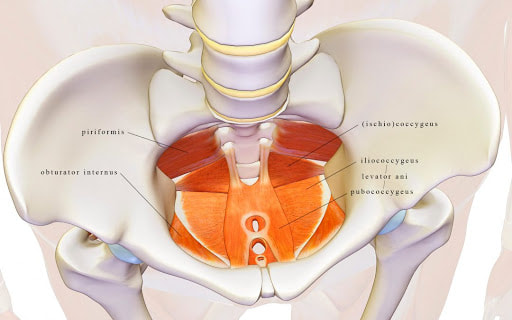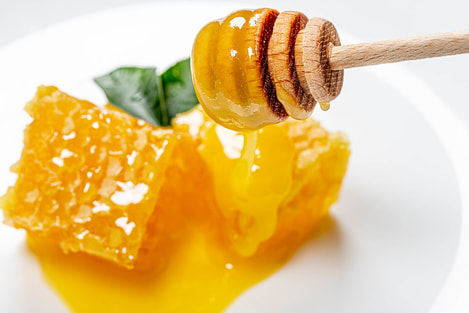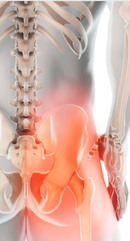|
27/6/2020 1 Comment Caring For Your Pelvic FloorDo you experience constipation, urinary incontinence, pelvis spasms or painful sex? If so, your pelvic floor muscles might be performing poorly.The pelvic floor muscles sit at the base of your abdomen; attaching your pubic bone, tail bone, and the base of your pelvis. They act like a sling, supporting the pelvic organs including the bladder, rectum, uterus or prostate gland. When working well, you can wait to use the toilet and relieve yourself with ease. Your pelvic organs remain in place. You continue to take these muscles for granted, but when they’re dysfunctional, symptoms may result.
Symptoms can be indicative, like a sudden urge to urinate or uterine prolapse. Urination might hurt. Constipation may occur. Sexual intercourse could become uncomfortable, even painful, for women. Discomfort may be felt in the genitals, rectum, lower back or pelvis. The symptoms can have a severe impact on your quality of life. While the pelvic floor muscles can, on occasion, become too tight, the vastly more common problem is related to weakness. These muscles can weaken for many reasons including: increasing age, injury, hormonal changes associated with menopause, being overweight, repetitive strain through heavy lifting, straining from constipation, or continual coughing. For many women, pregnancy and childbirth can cause weakened pelvic floor muscles. Hormonal changes, downward pressure, and a growing baby can all contribute to bladder and bowel leakage, pelvic pain or prolapses. When weak, it’s important to strengthen the pelvic floor. Your health professional can instruct you on Kegel exercises, which specifically target the right muscles. Just as achieving results from attending a gym requires regularity, so does strengthening your pelvic floor – daily. Exercise regularly. Walking is restorative for your pelvic floor muscles and for your spine. If you think you may be experiencing pelvic floor dysfunction, seek help. You do not have to live with these symptoms. Treatment options are available, many are natural and safe. We are ready to help. Picture: Unknown Author Pinterest
1 Comment
27/6/2020 0 Comments The Healing Powers of HoneyHoney has been prized around the world since time immemorial for its flavour, as well as its medicinal qualities. Jars of honey dating back to 5,500 years ago were found in a noblewoman’s tomb in Georgia, showing how treasured honey has been through the ages.Honey is a sweet substance that bees produce from the nectar of flowering plants. Many types are available depending on the plant type. Honey is loved around the world for its flavour, texture and versatility.
And it’s good for you. Honey was used as a healing ointment at least as far back as Ancient Egyptian times, and its popularity as a wound care product has had a recent resurgence. Researchers believe that honey’s healing powers come from its antibacterial and anti-inflammatory effects. It also has the ability to nourish surrounding tissue, making it effective for wound healing. Pharmaceutical preparations of honey are now well-evidenced as excellent topical antibiotics with healing properties. Honey is rich in antioxidants, known for their properties in reducing the risk of cell damage and certain cancers. A growing body of evidence links honey with reduced risk of cardiovascular disease and type two diabetes; due to its action on harmful triglycerides – chemicals linked to insulin resistance and inflammatory disease. Honey is also thought to increase HDL – ‘good’– cholesterol while decreasing LDL – ‘bad’ – cholesterol. Honey has been popular for generations as a traditional home remedy for sore throats, hay fever, skin conditions, and coughs and colds. Regular honey is often pasteurised and processed, so raw honey is the best way to maximize potential health benefits. DRAWBACKS TO HONEY Although researchers have found a possible connection between honey and a lower glycaemic index compared to other sugars, consuming honey still means you are consuming sugar, which does affect your blood sugar in some way. Eat only a moderate amount of honey in your diet, or replace processed sugars with honey for a sensible approach. Current advice from the World Health Organisation is that honey should not be given to infants under twelve months, as in rare cases honey may harbour certain bacteria which, while harmless to older children and adults, can cause serious illness in babies. In short... Honey is high in certain substances which are known to promote health and reduce certain diseases. There is compelling evidence for its use in wound treatment, and ongoing research into its potential for reducing the risk of cancer and other serious illness. While honey is high in healthy chemicals, it’s also high in sugars – better forms of sugar than most other sweet foods, but still high in calories, so moderation is the key. 27/6/2020 1 Comment Boosting Your Winter WellbeingWith winter settled upon us, the longer nights and colder days can make healthy eating and exercising feel difficult. Yet now is the perfect time to prioritise these two practices – they can help enhance your immunity, elevate your mood, and ease the aches and pains that commonly accompany this season.As the saying goes, “you are what you eat”. While cold salads might send a shiver up your spine, there are plenty of healthy meals to fill the need for comfort food, and meet your nutritional needs. They could also help protect you from viral infections, including the common cold.
The common cold is more prevalent in winter because the colder temperatures reduce antiviral immune responses, allowing greater replication. Added to that, nutritional deficiencies might both lower immunity and increase the potency of any virus we become infected with. Nutrition, though, can provide a powerful antidote. Nature’s antioxidants and anti-inflammatory compounds help fight against viral infection. You can find these in foods such as almonds, avocado, seeds, turmeric, curcumin, berries, green vegetables, nuts, olive oil, and fresh fatty fish. Lentil bakes, hearty risottos and soups, vegetable omelettes, veggie-packed stir-fries, berry smoothie bowls... The choices are endless, only limited by your imagination. Maybe it’s a good time to take a cooking class? You may hear people talking about “the winter blues”. Darker days can bring darker moods. Consuming foods rich in vitamins B12, B9 and zinc may help, as deficiencies in these can cause low mood. Think – eggs, leafy greens, legumes, nuts, oysters, salmon and seeds. Exercise is also great for boosting your mood. Exercise improves immune function. Add in its pain relieving power and mood lifting ability, and moving throughout winter becomes essential. If adverse weather keeps you housebound; stream exercise classes, dance, try body weight exercises, and clean your home energetically. If the weather is hospitable, go out for regular walks. The winter months need not be a time of hibernation, accompanied by poor food choices, irregular exercise and ill health. Use these tips to ensure you effortlessly glide through our coldest season in great shape, and ready for the rest of the year. 27/6/2020 0 Comments Hip Flexor InjuryHave you suddenly experienced a pain near your hip, or in your groin? |
AuthorAdam's Back is a team of dedicated complimentary health professionals. Our aim is to support you in finding drug-free solutions for better health. Archives
July 2024
Categories |
Search by typing & pressing enter








 RSS Feed
RSS Feed